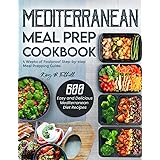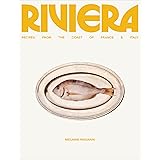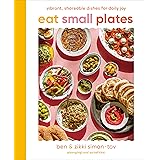Living with Type 1 Diabetes introduces unique challenges, particularly when it comes to everyday meal planning. Many individuals find themselves searching for practical, delicious, and blood-sugar-friendly food options that also fit into a busy lifestyle. The accompanying video offers a glimpse into a day’s worth of meals for someone managing Type 1 Diabetes, providing visual inspiration for various dietary choices. This article aims to expand upon that inspiration, offering deeper insights into the principles behind successful Type 1 Diabetes meal planning and practical strategies for maintaining stable glucose levels through thoughtful nutrition.
The journey of managing Type 1 Diabetes effectively often revolves around a deep understanding of how food impacts the body. Every meal becomes an opportunity to balance macronutrients, meticulously count carbohydrates, and administer appropriate insulin doses. It is a continuous learning process that empowers individuals to make informed decisions about their health and well-being. By exploring foundational dietary concepts, a more proactive approach to daily eating can be fostered, significantly improving overall diabetes management.
Understanding Type 1 Diabetes and Nutritional Essentials
Type 1 Diabetes (T1D) is an autoimmune condition where the body’s immune system mistakenly attacks and destroys the insulin-producing beta cells in the pancreas. Insulin, a vital hormone, is responsible for allowing glucose from food to enter the body’s cells for energy. Without insulin, glucose accumulates in the bloodstream, leading to high blood sugar levels that can cause serious health complications over time. Therefore, external insulin administration, often through injections or an insulin pump, becomes a lifelong necessity for individuals with T1D.
The role of nutrition in Type 1 Diabetes management cannot be overstated; it forms a critical pillar alongside insulin therapy and regular physical activity. A carefully considered diet directly influences blood glucose levels, impacting both immediate and long-term health outcomes. Nutritional choices are instrumental in maintaining a healthy weight, preventing cardiovascular disease, and ensuring adequate nutrient intake for optimal body function. Furthermore, understanding the impact of different food groups is paramount for precise insulin dosing and minimizing glucose fluctuations throughout the day.
The Critical Role of Food Choices in T1D Management
Every food item consumed contributes to the body’s glucose load, necessitating careful consideration for individuals with Type 1 Diabetes. Carbohydrates are the primary macronutrient that significantly affects blood sugar levels, breaking down into glucose relatively quickly. Proteins and fats also play roles, albeit more slowly, influencing post-meal blood sugar responses and overall satiety. A balanced approach to nutrition, focusing on whole foods, lean proteins, healthy fats, and complex carbohydrates, is generally recommended. This comprehensive strategy supports steady energy levels and helps to prevent both hypoglycemia (low blood sugar) and hyperglycemia (high blood sugar), which are common concerns for those managing T1D.
Moreover, the fiber content in foods, particularly in fruits, vegetables, and whole grains, is known to slow down carbohydrate absorption. This slower absorption can lead to a more gradual rise in blood sugar, making it easier to manage insulin doses. Processed foods, on the other hand, often contain refined carbohydrates and added sugars, which can cause rapid and unpredictable spikes in glucose. Prioritizing nutrient-dense foods contributes not only to better blood sugar control but also to overall health, providing essential vitamins and minerals necessary for daily function.
Mastering Carb Counting for Optimal Blood Sugar Control
Carbohydrate counting is an indispensable skill for most individuals managing Type 1 Diabetes; it serves as a foundation for precise insulin dosing. This method involves tracking the amount of carbohydrates consumed in meals and snacks, subsequently adjusting insulin doses to match. Effective carb counting allows for greater flexibility in food choices while still maintaining blood glucose within target ranges. It empowers individuals to make informed dietary decisions and prevents the rigidity often associated with diabetes management.
The process of carb counting typically begins with understanding that different foods contain varying amounts of carbohydrates. Foods such as breads, pastas, fruits, starchy vegetables, and sugary drinks are notable sources of carbohydrates. Learning to read nutrition labels and using food scales or measuring cups can help to accurately estimate carbohydrate content per serving. Many resources, including dietitians and mobile applications, are available to assist in this learning process, making it more accessible for individuals at all stages of their T1D journey.
Practical Approaches to Accurate Carbohydrate Measurement
Achieving accuracy in carbohydrate measurement requires consistent practice and attention to detail. Initially, using a food scale for precise portion control can be incredibly beneficial, especially for new learners. Nutrition fact labels on packaged foods provide carbohydrate information per serving, but it is important to note the serving size specified. For fresh produce or restaurant meals, consulting a comprehensive food database or working with a registered dietitian can offer valuable guidance. Over time, individuals often develop an intuitive understanding of carbohydrate values, allowing for quicker and more confident meal decisions without constant measurement.
Beyond simply counting carbohydrates, it is also important to consider the type of carbohydrates being consumed. Complex carbohydrates found in whole grains, legumes, and certain vegetables are digested more slowly, leading to a more gradual rise in blood sugar. Simple carbohydrates, such as those found in fruit juice, candy, or white bread, are absorbed quickly and can cause rapid glucose spikes. Integrating a balanced mix of these carbohydrate types, alongside proteins and healthy fats, helps to create meals that support more stable blood glucose levels and prolonged satiety, ultimately simplifying T1D management.
Building a Balanced Plate: Essential Components for Type 1 Diabetics
Creating a balanced plate is a cornerstone of effective Type 1 Diabetes meal planning, ensuring adequate nutrition while supporting stable blood glucose. This involves strategically combining various food groups to optimize nutrient intake and manage post-meal blood sugar responses. A well-constructed meal typically includes a thoughtful mix of carbohydrates, proteins, and healthy fats. The “plate method” is a popular visual tool that can simplify this process, dividing a plate into sections for non-starchy vegetables, lean protein, and complex carbohydrates, making meal assembly intuitive and straightforward for individuals of all ages.
Non-starchy vegetables, such as leafy greens, broccoli, and peppers, should form the largest portion of any meal due to their high fiber content and minimal impact on blood sugar. These vegetables are packed with vitamins, minerals, and antioxidants, contributing significantly to overall health. Lean protein sources, including chicken, fish, tofu, or legumes, are essential for muscle maintenance, satiety, and slowing down the absorption of carbohydrates. Healthy fats from avocados, nuts, seeds, and olive oil provide sustained energy and further contribute to feelings of fullness, helping to prevent overeating and subsequent glucose fluctuations.
Optimizing Meal Composition for Stable Glucose Levels
When selecting carbohydrates, emphasis should be placed on whole, unprocessed options that offer sustained energy release. Whole grains like quinoa, brown rice, and whole-wheat pasta provide complex carbohydrates that are digested slowly, preventing abrupt blood sugar spikes. Incorporating small portions of fruits, which contain natural sugars along with fiber, can also be part of a healthy meal plan. The combination of these macronutrients—carbohydrates, proteins, and fats—works synergistically to moderate the rate at which glucose enters the bloodstream, making insulin administration more effective and predictable for individuals with Type 1 Diabetes.
An additional consideration for optimizing meal composition involves mindful portion control. Even healthy foods, when consumed in excess, can impact blood sugar management. Regular monitoring of glucose levels after meals can provide valuable feedback on how specific food combinations and portion sizes affect individual responses. This data-driven approach allows for continuous refinement of meal plans, leading to better blood sugar stability and improved quality of life for individuals navigating Type 1 Diabetes. Experimentation with various food combinations, under professional guidance, is often encouraged to discover personal optimal dietary strategies.
Practical Meal Ideas: Breakfast, Lunch, and Dinner for Type 1 Diabetics
Translating nutritional principles into practical, appealing meal ideas is often a primary goal for individuals managing Type 1 Diabetes. The goal is to create meals that are both delicious and conducive to stable blood glucose levels, avoiding the feeling of dietary restriction. Thoughtful planning can transform everyday ingredients into diabetes-friendly meals that satisfy hunger and nutritional needs. These suggestions provide a starting point for developing a varied and enjoyable eating plan that supports long-term health and empowers individuals to take control of their Type 1 Diabetes management.
Nourishing Breakfast Options to Start the Day Right
Breakfast, often considered the most important meal, sets the tone for blood sugar management throughout the day for individuals with Type 1 Diabetes. Options that combine complex carbohydrates with protein and healthy fats are ideal for preventing early morning glucose spikes and providing sustained energy. A bowl of oatmeal made with water or unsweetened almond milk, topped with berries and a handful of nuts, offers fiber and essential nutrients. Scrambled eggs with spinach and whole-wheat toast provides a robust blend of protein and complex carbohydrates, ensuring a steady release of glucose. Another excellent choice involves Greek yogurt with a sprinkle of chia seeds and a small portion of fruit, delivering protein and probiotics beneficial for gut health.
Balanced Lunch Ideas for Midday Energy and Stability
Lunch needs to be both satisfying and blood-sugar-friendly, providing the energy required to power through the afternoon. A large salad featuring grilled chicken or chickpeas, an assortment of non-starchy vegetables, and a light vinaigrette dressing is an excellent choice, offering significant fiber and protein. Whole-wheat wraps filled with lean turkey, hummus, and plenty of mixed greens present another convenient and nutritious option. Leftovers from a healthy dinner, such as a portion of baked salmon with roasted vegetables, can also make for a quick and balanced midday meal. These choices prioritize nutrient density and effective glucose control, supporting overall well-being for individuals managing Type 1 Diabetes.
Wholesome Dinner Suggestions for Evening Glucose Management
Dinner for individuals with Type 1 Diabetes should focus on nutrient-rich foods that promote satiety without causing significant overnight blood sugar fluctuations. Lean protein sources like baked salmon or grilled chicken served with a generous portion of steamed broccoli and a small side of quinoa offer a perfect balance. Lentil soup, packed with fiber and protein, accompanied by a small piece of whole-grain bread, makes for a comforting and diabetes-friendly meal. Vegetable stir-fries with tofu or shrimp, using plenty of non-starchy vegetables and a low-sodium sauce, are also excellent choices for a flavorful and blood-sugar-conscious dinner. These options underscore the importance of mindful eating and strategic food pairings for optimal glucose control in Type 1 Diabetes management.
Strategic Snacking and Hydration for Type 1 Diabetics
Strategic snacking plays a crucial role in managing Type 1 Diabetes by helping to prevent significant drops in blood sugar between meals and satisfying hunger. Mindful snack choices can help stabilize glucose levels, especially for individuals who are physically active or have longer intervals between their main meals. It is important that snacks are selected with the same careful consideration given to larger meals, focusing on balancing macronutrients. Keeping healthy, pre-portioned snacks readily available can significantly simplify daily Type 1 Diabetes management and promote consistent blood sugar control throughout the day.
Healthy snack options typically combine a source of protein or healthy fat with a small amount of complex carbohydrates. A handful of almonds with an apple slice, Greek yogurt with a few berries, or celery sticks with peanut butter are all excellent choices. Hard-boiled eggs offer a convenient protein boost, while a small portion of cottage cheese with cherry tomatoes provides both protein and nutrients. These types of snacks help to slow down sugar absorption, preventing rapid glucose spikes and subsequent crashes. Thoughtful snacking is an integral part of maintaining energy levels and ensuring overall well-being for individuals managing Type 1 Diabetes.
The Overlooked Importance of Proper Hydration
Beyond food choices, proper hydration is an often-underestimated component of effective Type 1 Diabetes management. Water plays a vital role in numerous bodily functions, including regulating blood sugar. Dehydration can lead to higher blood glucose levels because glucose becomes more concentrated in the bloodstream when fluid volume is low. Maintaining adequate fluid intake helps the kidneys to properly excrete excess glucose through urine, preventing severe hyperglycemia. Water is also essential for nutrient transport, temperature regulation, and joint lubrication, all of which contribute to overall health and vitality for individuals with Type 1 Diabetes.
Choosing water as the primary beverage is strongly recommended, avoiding sugary drinks, fruit juices, and sweetened teas that can significantly impact blood sugar. Unsweetened sparkling water with a slice of lemon or cucumber can offer a refreshing alternative for those desiring more flavor. Carrying a reusable water bottle serves as a constant reminder to drink throughout the day, ensuring consistent hydration. Prioritizing water intake is a simple yet profoundly effective strategy for supporting stable blood glucose and promoting overall health in the context of Type 1 Diabetes. This mindful approach to both food and drink significantly enhances the daily management of the condition.











